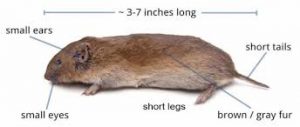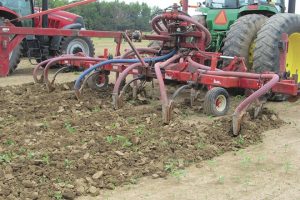By James Hoorman, Hoorman Soil Health Service
Farmers had several state and national opportunities to receive payments or premiums from planting cover crops. Some deadlines are past, others have been extended. Farmers may want to review some of these programs and look at the current benefits from planting cover crops yet this fall.
Ohio H20 Program: Due to a late harvest and adverse weather conditions, the Ohio Department of Agriculture (ODA) extended the 2021 H2Ohio Program deadline for planting overwintering cover crops to November 1st, 2021. Theses cover crops include small grains and manure incorporation. H2Ohio producers enrolled in any of the 24-county Ohio area will have until November 1, 2021 to plant their overwintering cover crops and complete all manure incorporation requirements. ODA recommends to adjust seeding rates to reduce to the risk of planting failure. According to the Natural Resource Conservation Service (NRCS) Appendix A, seeding rates should be increased by 20% when planting cover crops this late in the season.
For manure incorporation, all H2Ohio practices must be met. Additionally, requirements established in the nutrient management standard (NRCS 590) must be followed.
Crop Insurance: Farmers also had the opportunity this year to get a $5 premium off their crop insurance if they planted any type of cover crop last year. The deadline to file was June 21st, so it’s too late to file this year, but it may be a possibility again next year. The Pandemic Cover Crop Program (PCCP), offered nationally by USDA’s Risk Management Agency (RMA), helps farmers maintain their cover crop systems, despite the financial challenges posed by the pandemic.
Soybean Cyst Nematode (SCN): Farmers who experienced problems with SCN or sudden death may want to consider planting cereal rye yet this fall. Soybean cysts can be fooled into emerging when soil temperatures are above 500 Fahrenheit. Studies on cereal rye show that up to 80% reductions in SCN may be obtained. Cereal rye is not a host to SCN, but the SCN can not distinguish between soybeans and cereal rye when they first emerge. Once the SCN comes out of its cyst, it does not have time to find a suitable host or mature, so it dies out. Due to a warm fall, this could be a good strategy to reduce high soil SCN populations.

Slugs and voles: While cover crops and no-till tend to attract slugs and voles (field mice), farmers can use several strategies to reduce their numbers. Slugs and voles like wet soil conditions and lush vegetation. Planting cover crops this late in the season, reduces crop growth and reduces the insulation factor going into winter. Many predators including birds (owls, hawks, eagles, falcons, etc.) and mammals (fox, coyote, etc.) eat both slugs and voles. About 6% of a starling’s diet is slugs. To increase predation, farmers should mow cover crops down to 6-8 inches if they are extremely tall and thick.
Farmers can also push steel fence posts 10 feet tall with a 12” inch cross bar into the soil to help bird predators control vole colonies. Paint the steel post a bright color because it makes them easier to find if deer rub up against them and knock them over. With moist soil, posts can be moved periodically to improve pest control. Another option, is to get a good rat terroir or small dog. Rat terroirs were bred to hunt rats and mice, so they can reduce vole populations this fall, winter, and next spring.
Wildlife Benefits: For hunters and wildlife enthusiast, cover crops make a great place to either see or hunt for wildlife. Deer love browsing on cover crops including radish, kale, and rape which can have up to 25% crude protein. Hunters will find that deer tend to browse and stay around the edges of a cover crop field. To increase habitat and the edge effect, mow irregular paths with some curves. Leave some areas taller and shorter to increase patchiness. Wildlife including deer, quail, pheasant, turkeys, rabbits, and predators travel and live along these paths.
Environmental Effects: Let’s not forget the great environmental effects that cover crops provide. Keeping the soil covered in the winter reduces soil erosion and nutrient runoff, which improves water quality. Live roots soak up excess nitrogen and phosphorus and keep many micro-nutrients recycling in the soil while keeping the soil in place. Cover crops also improve drainage, soil structure, and overall soil health.
"pay" - Google News
October 26, 2021 at 12:39PM
https://ift.tt/3bgmh7C
Cover crops pay dividends – Ohio Ag Net - Ohio's Country Journal and Ohio Ag Net
"pay" - Google News
https://ift.tt/301s6zB
Bagikan Berita Ini















0 Response to "Cover crops pay dividends – Ohio Ag Net - Ohio's Country Journal and Ohio Ag Net"
Post a Comment